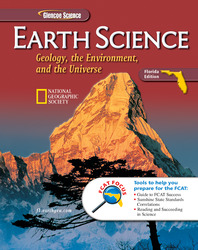1 Feature State Late Pleistocene Holocene Huge Huge Large Medium Small Mount Baker WA 1 3 Glacier Peak WA 2 7 Mount Rainier WA 1 1 10 Mount St. Helens WA 7 Mount Adams WA 4 Mount Hood OR 3 Mount Jefferson OR 1 Three Sisters OR 2 2 Newberry Caldera OR 1 3 Crater Lake OR 1 2 Medicine Lake CA 8 8 Mount Shasta CA 1 2 10 Lassen Peak CA 4 1 2 Total 7 1 10 20 49
Note: Huge eruptions => 10Km3 of ejecta; Large=1-10 ; Medium -0.1-1Km3 ; Small= < 0.1Km3 .
A) Lassen Peak B) Mount Hood C) Mount Rainier D) Mount Shasta 2 A) type of material and eruption B) type of eruption and temperature of the lava C) type of material and viscosity D) type of eruption and latitude 3 A) volcanic bombs B) hot spots C) divergent plate boundaries D) cinder cones 4 A) a mixture of volcanic gas, ash, and other tephra B) when lava comes out of a volcanic vent C) lava that hardens into a batholith D) poisonous gas of a volcano 5 A) tephra B) extrusive C) granite D) lava 6 A) in the southern hemisphere B) at plate boundaries C) far from plate boundaries D) along the Mid-Atlantic Ridge 7 A) a vent B) a batholith C) a stock D) a caldera 8 A) ash B) volcanic bombs C) volcanic blocks D) lapilli 9 <a onClick="window.open('/olcweb/cgi/pluginpop.cgi?it=jpg::::/sites/dl/free/0078728487/184123/115_arrows1_ss_182c.jpg','popWin', 'width=NaN,height=NaN,resizable,scrollbars');" href="#"><img valign="absmiddle" height="16" width="16" border="0" src="/olcweb/styles/shared/linkicons/image.gif"> (4.0K)</a> A) average water B) less water C) more water D) water completely absent 10 A) by a vent B) by tephra C) by a hot spot D) by a sill 11 A) composite volcano B) cinder cone C) caldera D) shield volcano 12 <a onClick="window.open('/olcweb/cgi/pluginpop.cgi?it=jpg::::/sites/dl/free/0078728487/184123/115_arrows2_ss_182c.jpg','popWin', 'width=NaN,height=NaN,resizable,scrollbars');" href="#"><img valign="absmiddle" height="16" width="16" border="0" src="/olcweb/styles/shared/linkicons/image.gif"> (3.0K)</a> A) a mixture of lava and volcanic fragments B) uplifting of mountains before exploding into a volcano C) material is ejected into the air and falls back to earth D) layer upon layer of basaltic lava accumulating during nonexplosive eruptions







